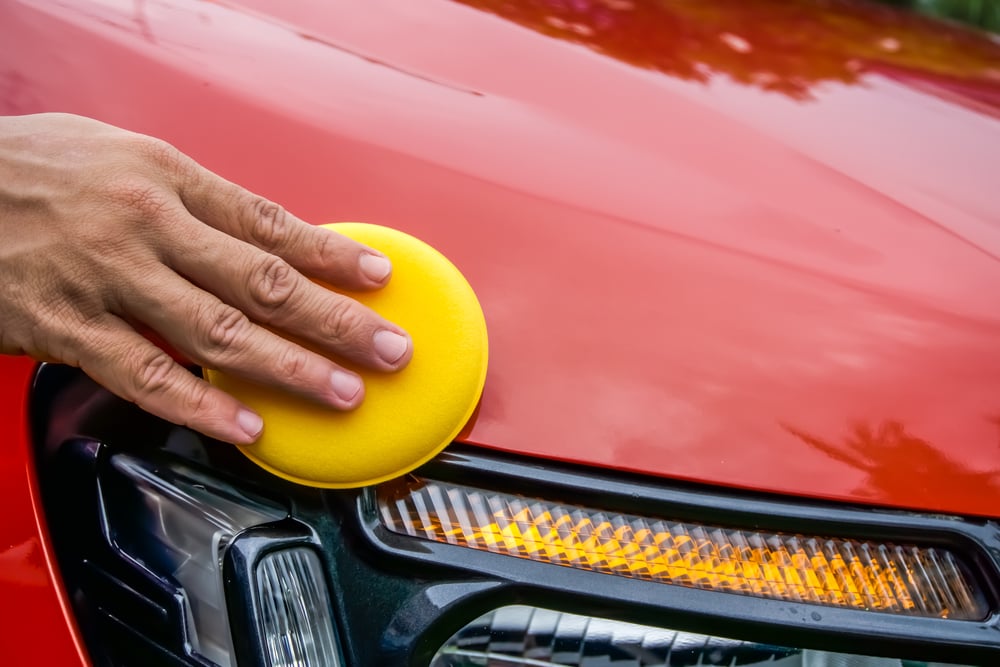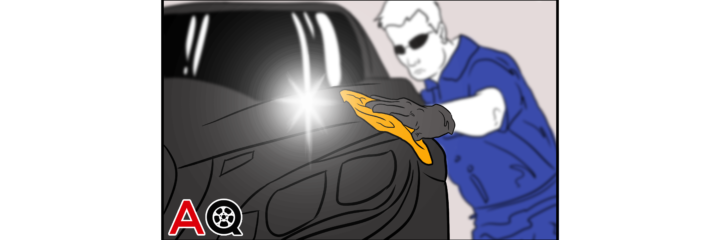Let’s say you’re the proud owner of a brand new car, or perhaps you will be soon. If you’re a car enthusiast and you want to keep your new vehicle looking as pristine as if it just rolled off the dealership lot, you may wonder when and whether you should try waxing your new car.
In this article, we’ll discuss those topics as well as the recommended process and frequency of car waxing.
Should You Wax a New Car?
Absolutely. Decades ago most dealers advised that buyers wait about two or three months after purchasing a new car to begin waxing. However, this recommendation no longer applies. Up to around the 1980s, dealers would sell cars before their inner paint layers had finished drying and curing. This meant that waxing the vehicle too soon would risk ruining the paint job.
Nowadays a car’s paint layers are finished drying and curing before it leaves the factory due to advancements made in the assembly and painting process in recent decades, which means you can wax your new vehicle as soon as you want.
Why Should You Wax a New Car?
You should definitely wax your new car as soon as possible in order to protect it from the elements. While you drive safely inside the interior of your car, the exterior of your car is subject to rain, snow, sleet, bugs, dust, dirt, debris, rocks, moisture, smog, sun and whatever else the outdoors might throw at it.
Waxing helps protect your car’s paint job, which means it’s less likely to chip or peel and leave the metal underneath vulnerable to premature rust. Not to mention, waxing gives your car a nice, shiny look as if it just left the showroom floor!
Types of Car Wax
Most car wax varieties fall into one of three categories: paste, liquid or spray. Each type has its pros and cons, and the waxing process is slightly different depending on which kind you choose.
Paste Wax
Paste waxes will produce the best shine, last the longest after application, and are harder to waste than liquid or spray waxes, so it’ll be a while before you run out. However, the waxing process will take longer using paste than if you choose one of the other two types as it’s harder to apply, so some patience will be necessary.
Liquid Wax
Liquid wax is easier to use than paste, and if you find a trusted brand, it can last longer after application than it would otherwise. Just make sure you don’t use too much and leave behind large amounts of residue. Excessive residue can make buffing the wax off at the end notably harder.
Spray Wax
Spray wax is definitely the easiest to apply, but it’s also less effective and doesn’t last as long as the other types. If you’re in a hurry or just want a quick touch-up, then spray wax is your best choice.
Once you’ve weighed your options and chosen your wax, you’re ready to start!
How to Wax a New Car
Waxing a car isn’t a particularly complicated process; it just takes a while.
General Tips for Waxing a New Car
Make sure you set aside a couple hours in your day to get it just right. Also, it’s best if you do it in a shady area like a garage for a few reasons. First, the sun might cause the wax to dry too quickly, especially if you attempt waxing on a hot day, and it’ll be harder to buff the wax off when you’re finished.
Second, any rain will make the wax start to run onto surfaces you didn’t intend to wax (you should only wax painted surfaces, not windows, mirrors, or lights) and you’ll have to clean up the mess.
Finally, you’ll likely be more comfortable spending a couple hours in a shady garage than out in the elements, so it’s best to wax your car indoors.

How to Hand Wax Your New Car
Now, onto the process itself:
Wash the Car
There’s no point in detailing a car that’s covered in debris. Plus, you want to remove contaminants and avoid making scratches on your car’s paint, which can happen if you apply the wax while there’s still dirt on the car’s surface.
All you need for this step is a sponge, a bucket of water and car washing detergent. Once you’ve washed the car, make sure you dry it just as thoroughly, taking special care to mop up any areas where water can pool.
Clean the Paint
Now, you want to remove any contaminants or debris that might remain. There are a couple ways to do this. One way is to rub a special surface prep pad over all of the car’s painted areas.
Another option is to use WD-40. Simply spray it over any spots with debris and it should clean the surface without harming the paint. Just be sure to use soap and water to clean off any spots you sprayed the WD-40 on and let them dry.
Check one last time to ensure all the surfaces you’ll be waxing are completely clean.
Read the Instructions on the Car Wax Container
While the directions given here work as general guidelines, it’s possible the wax you buy might have its own instructions on how to get the best result. Take a look at those before you start applying the wax.
Apply the Wax
Here is where the process varies depending on the type of wax you choose.
- For paste wax, rub one side of a microfiber applicator pad in the wax, then apply it to the car.
- For liquid wax, either pour it onto the applicator pad or the car.
- For spray wax, just spray it on your car’s painted surfaces.
Make small circular motions with your pad to spread the wax over every painted surface while avoiding unpainted areas like mirrors, windows and headlights/taillights. If any wax falls on unpainted areas, quickly wipe it off.
Buff off the Wax
Use a microfiber towel to buff off the wax on every painted area. It’s best to do this in the same order you applied the wax since by the time you’re done waxing, the areas to which you first applied the wax should be done drying. As before, make small circular motions to remove the wax. You might also want to use a soft brush to remove wax from molding, cracks and crevices that the microfiber towel can’t reach.
By now, your car’s paint job should be totally shiny! If it doesn’t look as lustrous as the day you bought it, it should be pretty darn close.
The above waxing method is often referred to as “hand waxing” because the work is done by hand. There are some other methods available if you want to speed up the process and are willing to shell out some more cash.
Other Car Waxing Methods
If you’d rather use a machine to help you wax your car, you have a couple options.
Dual-Action Polisher
This machine fits in the palm of your hand and will simultaneously spin clockwise and move in a figure-eight direction. All you have to do is apply the wax to the pad on the machine, and then use the DA polisher to spread it over your car’s surface.
Random Orbital Buffer
This machine moves in a random pattern over your car’s surface, which reduces the chance of leaving swirl marks like a regular rotary buffer. Just make sure you don’t have it on a setting that’s too fast or you’ll send wax flying all over your garage and risk leaving burn marks on your car.
Once the wax is done drying, you can just swap out your machine’s wax applicator for a microfiber cloth and buff off the wax. Alternatively, you can buff it off by hand.
How Often Should You Wax Your Car?
It depends. If you live in an area with more frequent extreme weather conditions, you’ll have to wax your car more often. Older cars also need waxing more often than newer cars. Additionally, you should consider how much time your car spends outdoors, how often do you drive it, and whether you park it in a garage or outside.
Regardless of your circumstances, you should wax your car at least twice a year. If you live in a more temperate climate and your car is usually indoors, then you won’t have to do it more often than that. However, if you live near an ocean, in a desert, or some other extreme climate, then three or four times a year is recommended.
Final Thoughts
Waxing your car regularly is essential whether you’ve just bought a brand new vehicle or you want your car to look like it did when it was new. If you’re about to buy a new car, be sure to wax it as soon as possible.
Simply decide which type of wax you want to use, gather the necessary equipment, and set aside a couple of hours on a weekend at least twice a year to both protect your car’s exterior from the elements and make it look as good as new.


